Garden makeover: a dull plot gets a new look with simple landscaping tricks
This small, rectangular garden space has been given a new lease of life with a mix of big design ideas and pretty planting
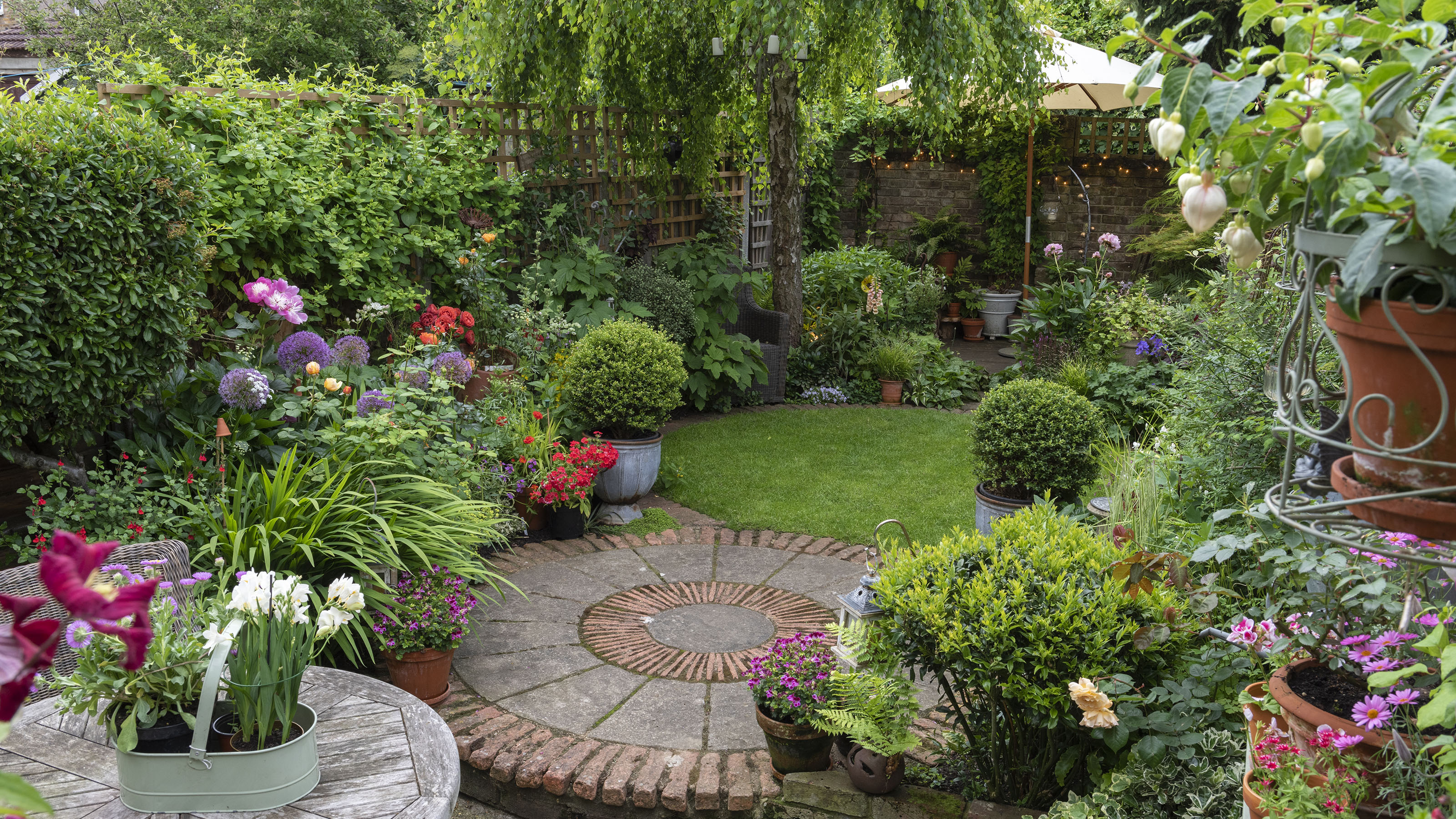

On receiving her first bonus in a new job Caroline Cassell asked a local landscaping company to transform her tiny 11x4m, south-east facing plot in Essex in the south of England. Originally, the garden was terraced into three levels (with a step up to each level), with a path up the middle of the plot that dominated and dictated the layout.
The house is a semi-detached 1897 cottage situated on a quiet suburban road. 'It was my first house – previously I’d had a flat – and the modest size of the garden really appealed to me,' says Caroline. 'I moved in during the winter and was desperate to start creating a garden straight away. Both my dad and grandad were keen gardeners, so it’s in my DNA, but I knew I needed to wait and I was glad I did because hidden gems began to emerge in the spring.'
Taking her time allowed Caroline to really think about what garden design ideas she wanted to incorporate into her space to resolve the issue of the uninspiring layout.
The plan for the makeover
With its central garden path and dull layout, the garden was ready for a complete change. Caroline didn’t see the point of just walking up and down a path. Instead, she wanted places to sit, as well as create views of the garden from different angles.
'I found myself inspired by TV home and garden makeover shows, books and visits to National Garden Scheme gardens, and I started a list of dos and don’ts while also sketching out my ideas. Originally, I worked with square shapes, until I realized the benefits of using circles to create an illusion of greater space.
'After 20 months of research and list-making I handed over my design to Edward Stone Supplies & Landscaping and looked on as my plans became reality.'
Creating the new layout
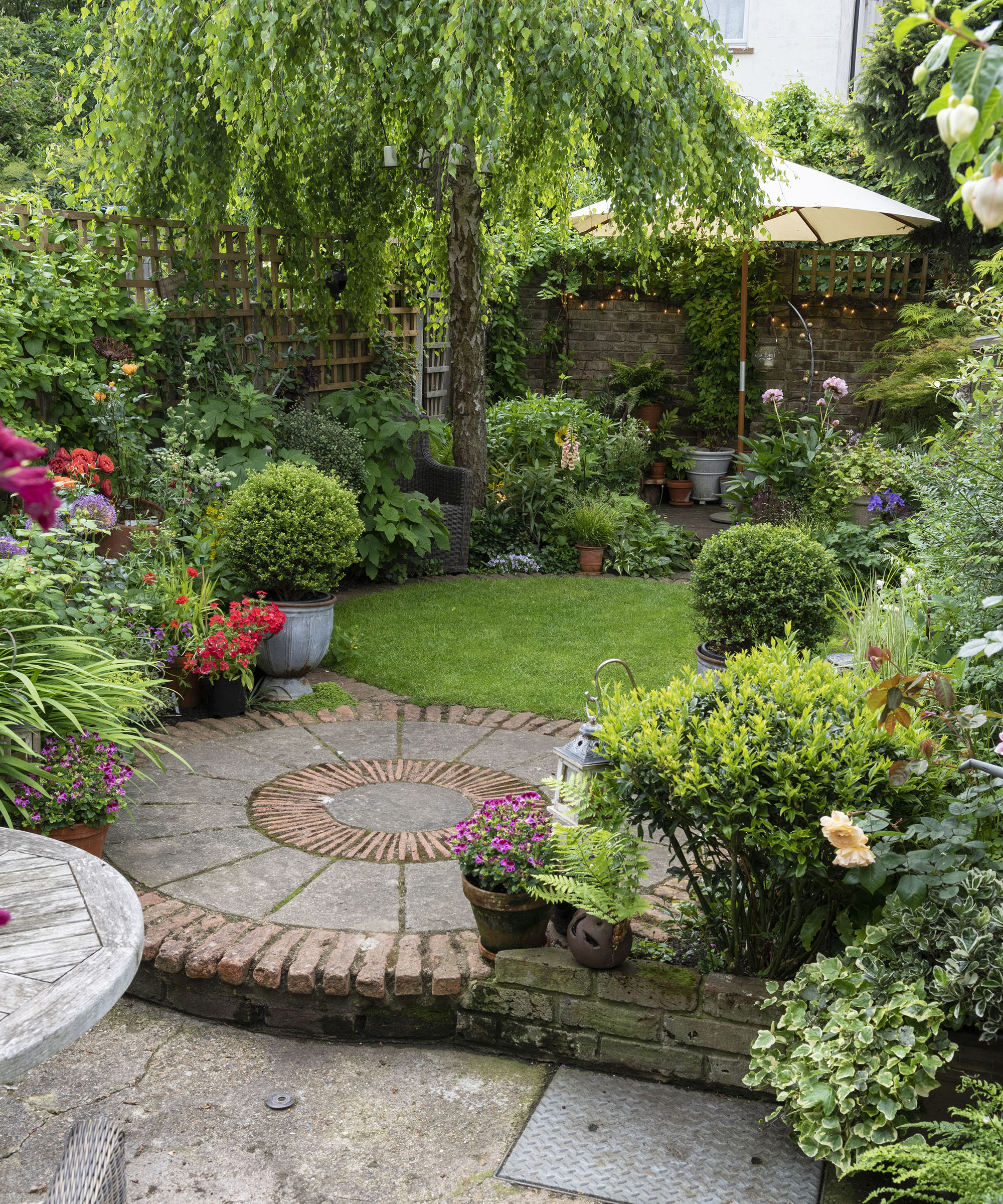
Keen to include some decking ideas in the redesigned space, Caroline earmarked the end of the garden for a new deck. The landscaper created three level areas, connected by single steps up. Then, working to Caroline’s design, he created the circular deck, and two other circles in the middle to visually link the spaces.
'I wanted a shady deck at the end, with a step down to two almost interlocking stone circles. However, my budget did not stretch to the second stone circle so we simply repeated the circular outline in brick, and filled in the centre with grass. Now, I love to walk barefoot on it or have a picnic.'
Experimenting with planting
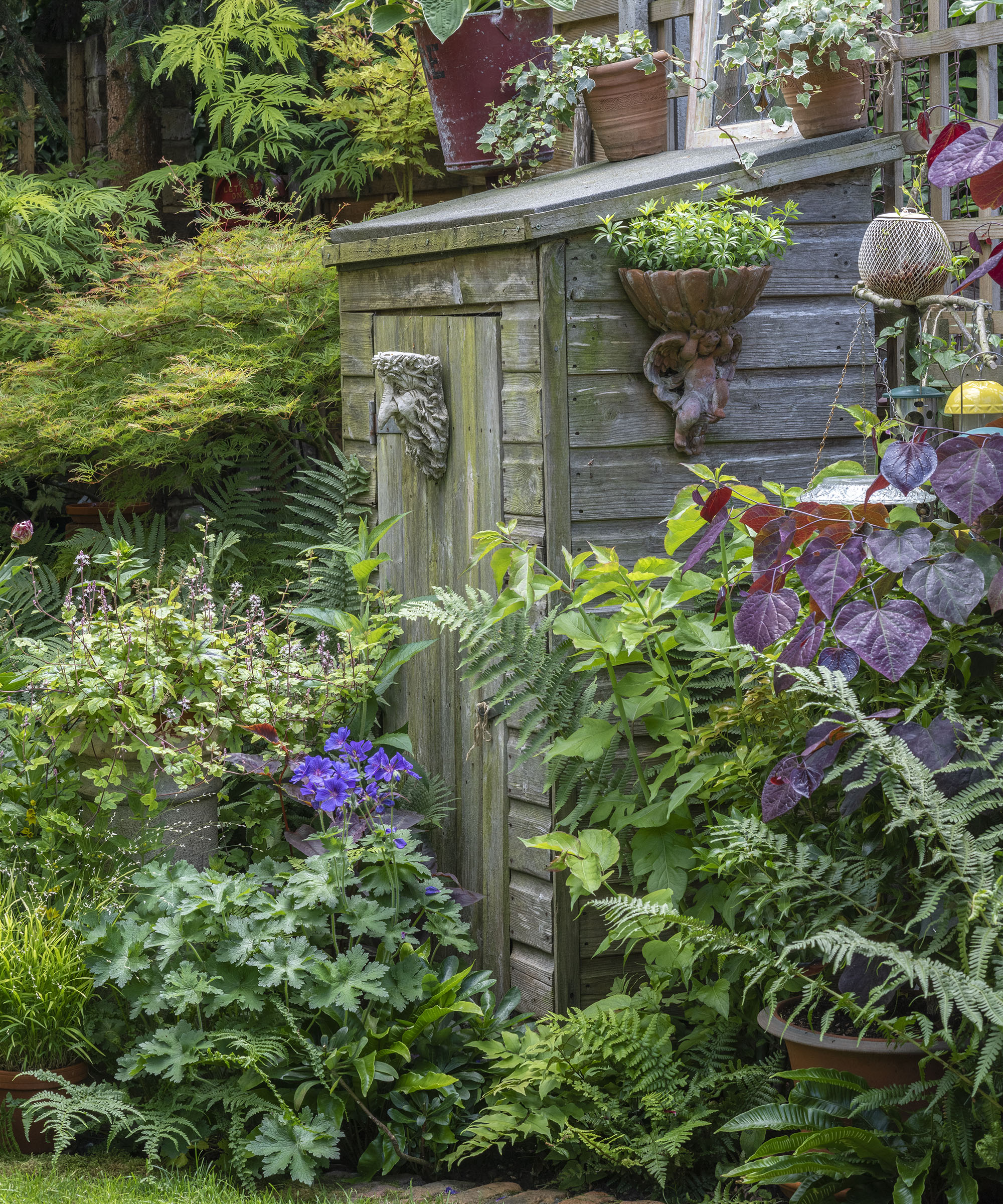
'Marking the overlap of the two stone circles are two clipped, small-leaved Japanese holly balls (Ilex crenata ‘Kinme’) in antique-style zinc pots. I originally had box balls, until box moth caterpillar stripped them of leaves, so I’ll never grow it again. Fortunately, Japanese holly is almost indistinguishable from box.
'I planted clematis to cover the garden walls and fences, starting with the vigorous Clematis ‘Madame Julia Correvon’ on the kitchen extension, while the ruffled white flowers of Clematis ‘Arctic Queen’ lighten the narrow side return, and Clematis ‘Etoile Violette’, drips from arches and fences. Not forgetting the roses, with several repeat-flowering varieties bred by David Austin Roses, including Rosa ‘The Lady of the Lake’, a rambling rose with fragrant, blush-pink flowers, and the golden English rose, ‘The Pilgrim’.'
A small wooden shed is tucked away amidst ferns, hostas, tiarellas, hardy geranium 'Johnson's Blue', a maple and redbud 'Forest Pansy'.
Adding planters for extra color and interest
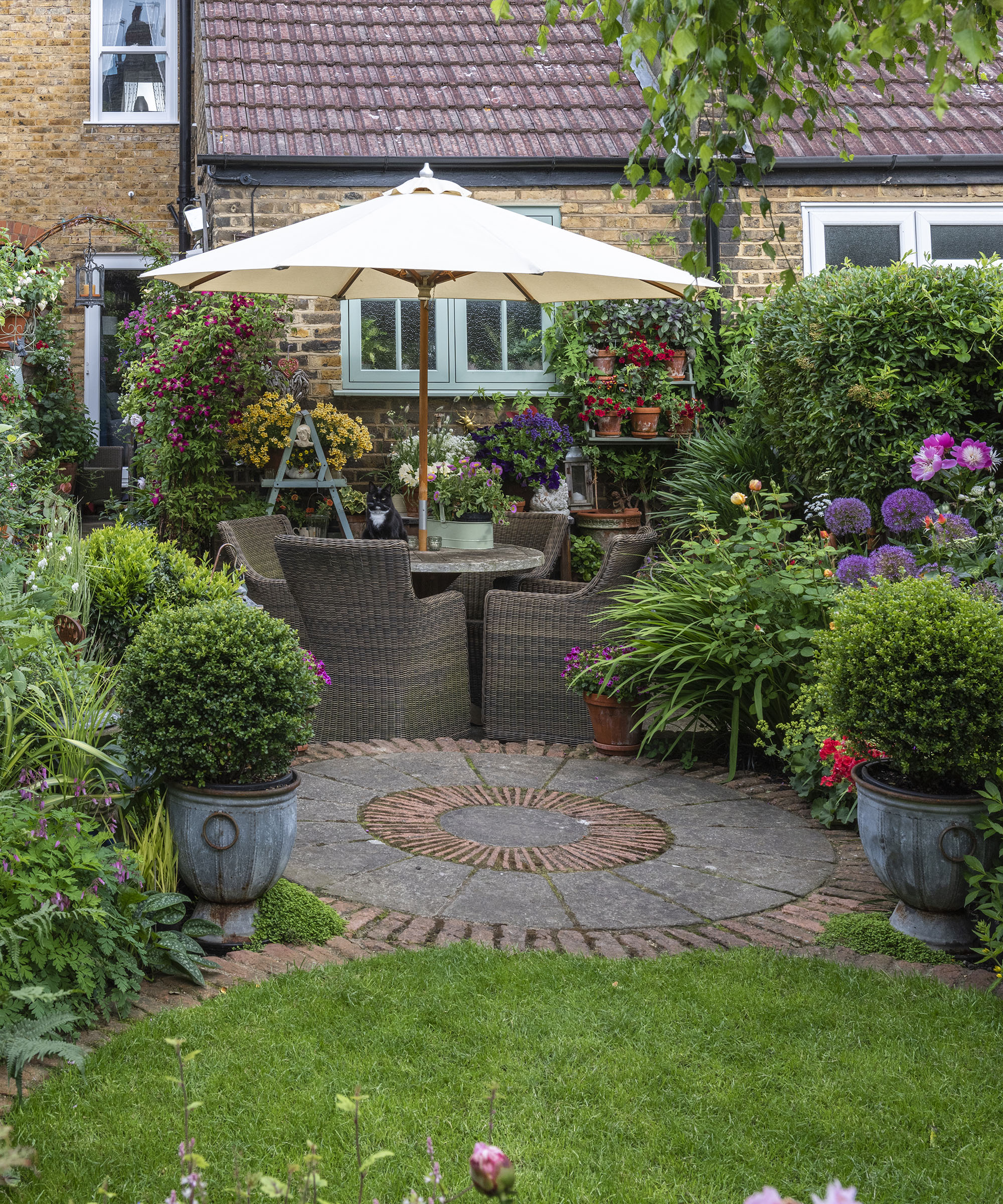
'It’s not obvious that many plants are actually grown here in garden planters. I realized that I didn’t have to grow everything in the ground, and could add potted plants raised on chimney pots, so as to allow those in the ground sufficient root space and light to thrive.
'I can also bring plants along in the sun, and then place them in shadier spots as they are flowering. Others wait in the wings, ready to move around at different stages of their growth, and slot in wherever a gap appears. I treat my garden rather like a room indoors where I am forever moving the furniture around for a change.'
Considering nature and wildlife
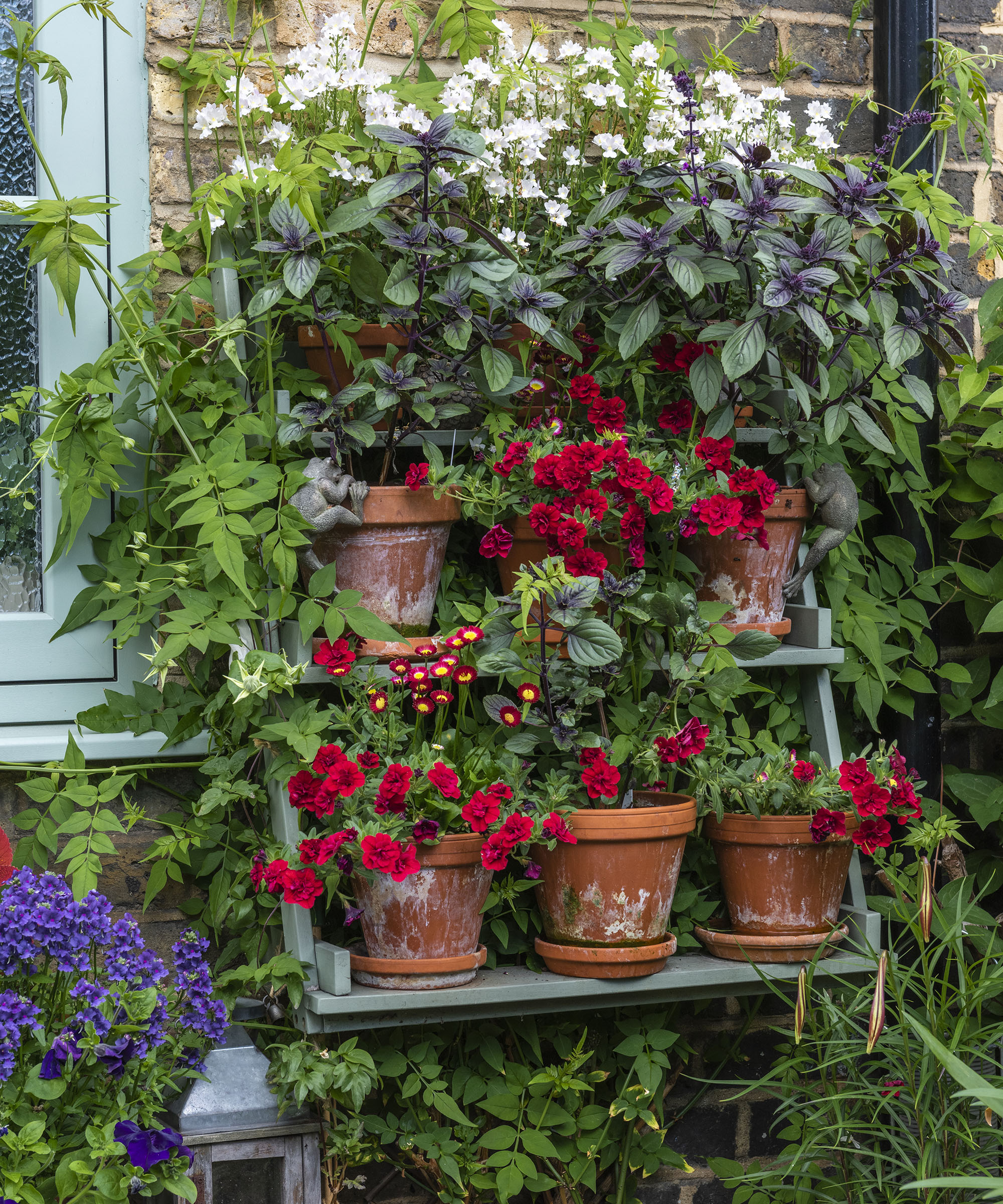
'I am now very conscious of the need to include plenty of wildlife garden ideas in my space, of organic treatments and, for example, leaving caterpillars on the verbascums to feed the birds. I’ve seen a lot of Comma and Red Admiral butterflies; they lay their eggs on the nettles, which provide food for the caterpillars when they hatch.
'In such a small garden, you can do a lot in just a quarter of an hour – it’s great for pottering. In winter, it largely goes to sleep, awakening to be a joy through the warmer months. My garden has a lovely calming effect and is a wonderful place to come home to.'
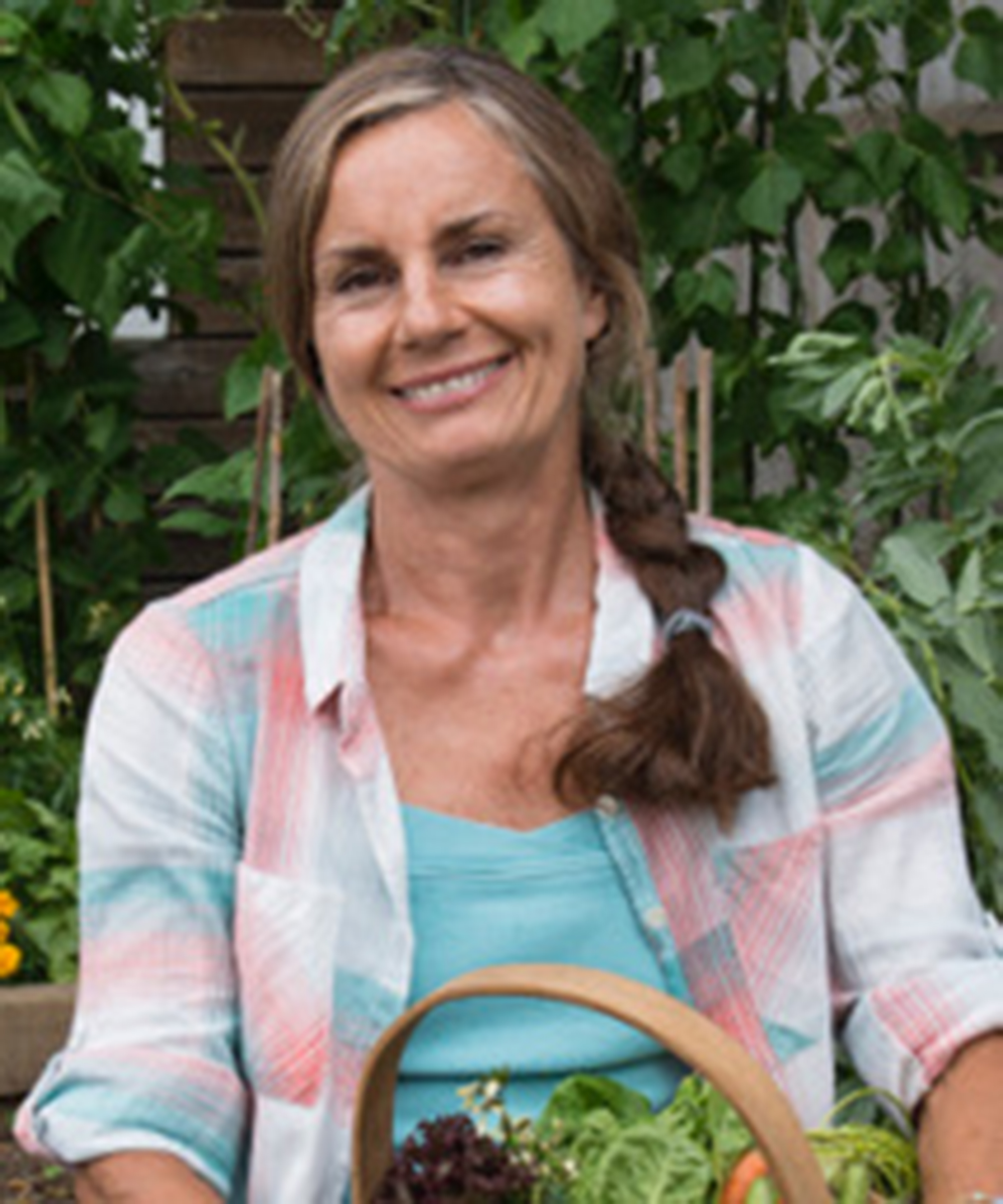
Nicola Stocken is both photographer and writer, conveying the beauty of gardens and plants through words and pictures that appear in publications all over the world, as well as in greetings cards and calendars. For some 30 years, she has photographed widely throughout the British Isles, meeting the remarkable people behind some of the loveliest gardens, specialist nurseries and unique plant collections.
Her love of plants is second only to that of photographing a garden for the first time, of capturing its different moods as the light shifts from the golden hours of dawn to the deepening pinks of sunset. In her spare time, she plays flute, runs, paddleboards and attempts to control her own garden beside the River Thames.
